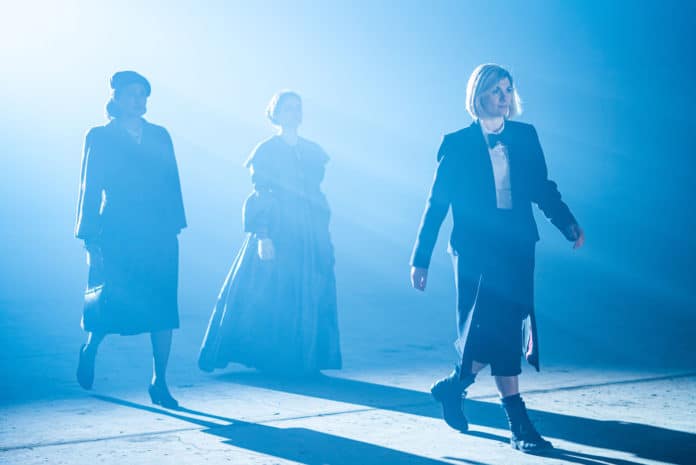Who was Ada Byron Lovelace?
If you’re reading this on a computer or smart phone, or even in the printed version, you’re able to do this because of Lovelace, who lived from 1815 to 1852.
Ada was an English mathematician and writer, the daughter of poet Lord Byron, and known for her work on Charles Babbage’s proposed mechanical general-purpose computer, the Analytical Engine. The computer programming language Ada is named after her.
But who was she? Fort Worth will have a chance to have a better idea of this revolutionary and influential woman starting Jan. 9, when Stage West opens a five-week regional premiere for Lauren Gunderson’s play, Ada and the Engine. .
According to the play synopsis, the story focuses on Ada’s dilemma as she is caught between her domestic world of homelife with a husband and children and her attraction to numbers and the potential of Babbage’s Analytical Engine. Ada, as you might suspect, is well ahead of her time.
Ada must have a hell of a press agent in 2020 as she was recently a character in the BBC’s Doctor Who time-travel series. The Doctor meets Ada in the episode Spyfall which recently aired.
According to Walter Isaacson’s book, The Innovators, Ada inherited her “poetic and insubordinate temperament from her father.” Lord Byron, in case your high school English teacher didn’t talk much about him outside of his poetry, was the George Clooney of his day. As my English teacher at Paschal put it, “He could have any woman he wanted.” OK, then, my teacher had our attention. Thanks, Paschal!
Ada was Byron’s only “legitimate” offspring and Ada’s mother, Anabella, was determined her child would not be a libertine like her wayward, philandering but beautiful husband and would quash any romantic tendencies her daughter demonstrated.
She, like most mothers, was not successful. Ada had an affair with one of her tutors and tried to run away with him when their tryst was discovered. This episode led her, at 18, to begin focusing on science, which, she said, kept her imagination from “running wild.”
It was an age for romanticizing science anyway. What was Mary Shelly’s Frankenstein (a story told to Lord Byron during a visit to Lake Geneva), but a tale of science gone mad?
Ada studied under Mary Somerville, a female mathematician and scientist, who probably deserves a play of her own. As Isaacson’s book notes, Ada was not a great mathematician. That was not the point. Ada found poetry in numbers and beauty in mathematics. It was this that made her stand out among others and spurred her creativity.
It was almost as if, by suppressing her romantic tendencies, she channeled them into other pursuits. Thus, while working with Babbage, she helped create a general-purpose machine that could be reprogrammed with punch cards.
That was Ada’s contribution, making the leap from machines that were mere calculators to ones that are what we now call computers.
I’ll quote Isaacson here:
This insight would become the core concept of the digital age: any piece of content, data or information – music, text, pictures, numbers, symbols, sounds, video – could be expressed in digital form and manipulated by machines.
Ada and Babbage worked to develop a thinking engine that could not only do complicated calculations, but also talk to itself, predict outcomes, and even make music. Hmm? What does that sound like?
Computer historian Doron Swade said that Ada’s 1843 paper was when that transition took place. Since then, Ada has been celebrated as a feminist icon. She certainly glimpsed the future. The U.S. Defense Department named its high-level object-oriented programming language after her. She was, literally, 100 years ahead of her time.
Ada contracted cancer and died too young, age 36, the same age as her better-known father. She still has secrets that have yet to be discovered. While lying ill, she confessed something to her husband that caused him to leave her bedside. What she told him remains a mystery.
It will be interesting to see what Gunderson’s play does with these materials. And by the way, if you go, be sure and silence your phones. I’m sure Ada doesn’t want to be interrupted by her own inventions.
Ada and the Engine will be directed by Emily Scott Banks. The cast features Kelsey Milbourn as Ada, with Steven Pounders as Charles Babbage. Playing the dual roles of Annabella and Mary Somerville will be Megan Haratine. Stage West’s Associate Producer Garret Storms will play both Lord Lovelace and Lord Byron.
Set design is by Michael Sullivan, with lighting design by Adam Chamberlin, costume design by Becca Janney, sound design by David Lanza, projection design by Tristan Decker, and props and set décor by Lynn Lovett.
Ada and the Engine runs Jan. 9 through Feb. 9. Performance times are Thursday evenings at 7:30, Friday and Saturday evenings at 8:00, and Sunday matinees at 3:00. Ticket prices for the new season are $35 on Thursdays and Fridays, and $40 on Saturdays and Sundays.
www.stagewest.org.






